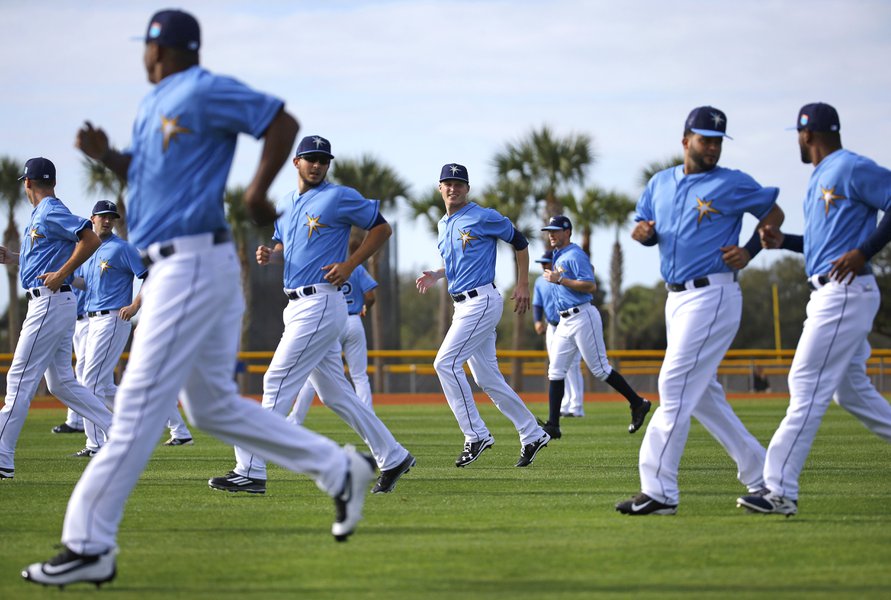Spring training is well underway, and the regular season is rapidly approaching. The first spring training games are exciting—they let diehard baseball fans know that warmer weather and the regular season are nearing—but after a few weeks, baseball fans just want to fast-forward to the regular season. Watching spring training games is a bit of a tease—starters do not play the entire game, games end in ties, and competitiveness is minimal. Should we pay attention to spring training games at all? Do spring training games mean anything for the regular season? Halfway through spring training, the Red Sox, Yankees, Royals, Cubs, and Orioles have each won fewer games than the Phillies, Rockies, Brewers, and Reds—four teams that are projected to be the worst teams this year. Should fans of the former teams be worried?
The best answer is no. There is a small correlation between spring training and regular season winning percentages; about eleven percent of a team’s talent level is reflected in their spring training performances. Still, spring training is mostly just a preparation for the season. Veterans go about their established routines and younger players try to perform well in front of big league coaches. There are examples of teams who played poorly in spring training that went on to have successful regular seasons: teams like the 2011 Diamondbacks (.324 in spring, .580 in regular), and the 2008 Red Sox (.381 in spring, .586 in regular), and teams who played well in spring training, but went on to have disappointing seasons, like the 2006 Royals (.630 in spring, .383 in regular) and the 2011 Twins ( .625 in spring, .389 in regular). On the average, however, there is a slight positive relationship between the two winning percentages.
Ultimately, spring training is a small sample of a much longer season—there are always months in the regular season that are worse than others for particular teams. Some of the most useful purposes of spring training are the chances to play players who will not be seen in the majors during the season, to “shake the rust off,” and to make mistakes. Spring training is a time for experimentation and failure. For example, it is more common to see teams experimenting with radical defensive shifts in spring training than it is to see them doing so in the regular season—if the changes backfire, there are no consequences. Rosters are different, the stats are less predictable, and playing time is uneven.
There still is that eleven percent predictor, however. From retroactively observing the spring training and postseason performances of teams in one season, we can create four general categories based on the patterns evident. Teams are: consistently good, consistently bad, spring under-performers, or spring over-performers. Last-place teams usually have had a spring training winning percentage of under .500. The correlation for playoff teams is less evident. Playoff teams are essentially equally likely to be above or below .500 in spring training. Using 2010 as an example, teams who finished under .500 in spring training had a 33 percent chance of finishing in last place, and only a 20 percent chance of making the playoffs. Alternatively, teams who had a winning percentage above .500 in spring training had a 33 percent chance of making the playoffs, and only a 7 percent chance of finishing in last place.
General trends remain, but many critics of taking spring training standings point to the many individual exceptions to the patterns. The 2013 Red Sox were exactly .500 in spring training, but went on to win the World Series that year. The Pirates had the worst record in the Grapefruit League that year, but broke their long playoff drought months later. The 2012 Blue Jays went 24-7 in spring training before finishing the season with a 73-89 record. Although there are many examples like these, we should still take note of the pervasive general trends. Maybe we should not care too much about spring training standings, but we should still hope our favorite teams finish the Spring with a winning percentage of above .500. These teams tend to be teams who are poised for successful regular seasons.





